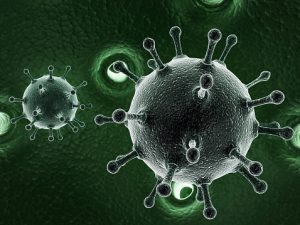 Hepatitis B is a viral infection that attacks the liver. A vital organ of the body involved in filtering the blood of toxins, producing necessary metabolites and biochemicals your body needs on a daily basis. It is currently estimated that about 257 million people are currently living with hepatitis B, and approximately 887,000 deaths from the viral infection recorded in 2015.
Hepatitis B is a viral infection that attacks the liver. A vital organ of the body involved in filtering the blood of toxins, producing necessary metabolites and biochemicals your body needs on a daily basis. It is currently estimated that about 257 million people are currently living with hepatitis B, and approximately 887,000 deaths from the viral infection recorded in 2015.
While a vaccine is available, there is currently no treatment to cure the disease. However, a team of researchers has recently uncovered new insight into how the virus works that may pave the way for new treatment development.
A highly infectious viral disease
Advertisement
The hepatitis B virus affects people of all ages, primarily being spread from exposure to infectious blood or bodily fluids. While sexual intercourse is a major point of contact, other forms of fluid transfer may also spread the disease. This includes shared needles, getting tattoo’s or piercings with unsterilized tools, and even childbirth by an infected mother.
There are essentially two phases of hepatitis: acute and chronic. Acute hepatitis may not present with any signs or symptoms, but when they appear, they typically include fatigue, loss of appetite, fever, nausea, vomiting, jaundice, and pale stools.
Half of infected individuals do not develop symptoms until their liver has already been damaged.
A chronic infection with the hepatitis B virus may be associated with chronic inflammation of the liver, leading to liver cirrhosis. This type of infection dramatically increased the incidence of hepatocellular carcinoma or liver cancer.
Discovering how it becomes infectious
Being a virus, hepatitis B is a very complex organism, but through the hard work of a team of researchers from the Universities of York and Leeds, they have identified the “assembly code” in the genetic material of Hepatitis B virus. Specifically the area of instruction that creates the protective casing it uses to produce new infectious virus particles.
“It is a bit like the chain on a bicycle. If we don’t assemble the chain on the sprockets, it becomes tangled and won’t function. Once assembled correctly, it connects the pedals with the wheels allowing the component parts to work together,” said Professor Reidun Twarock, a mathematical biologist at the University of York’s Department of Mathematics and Biology.
Advertisement
The research team is hoping to find new treatments that target this newly identified component of the virus. By inhibiting hepatitis at a genetic level, they could possibly make the virus non-infectious, reducing its spread. Halting viral replication also has implication in stopping the progression on the disease, possibly reducing symptoms.
“We often compare the disease to HIV due to the way in which the virus is passed from person-to-person, but unlike HIV there are no effective drugs to improve quality of life outcomes. Now that we know how the virus assembles, we can interrupt the interactions with the RNA signals — a bit like when a twig catches the sprocket on a bike, knocking the chain off.,” said Professor Peter Stockley, a structural virologist from the University of Leeds Astbury Centre.
Related: Hepatitis liver inflammation reduced by specific immune cells
